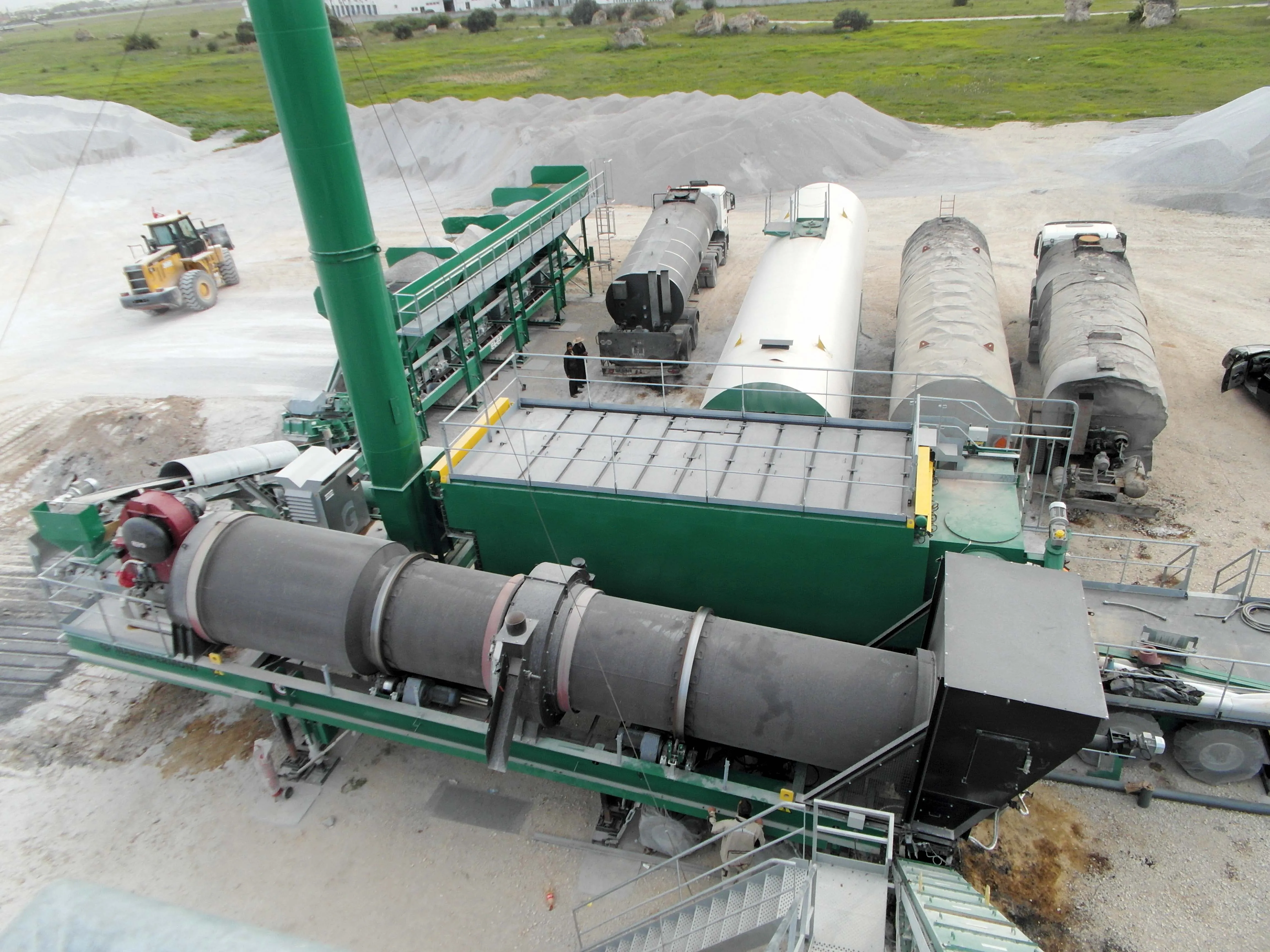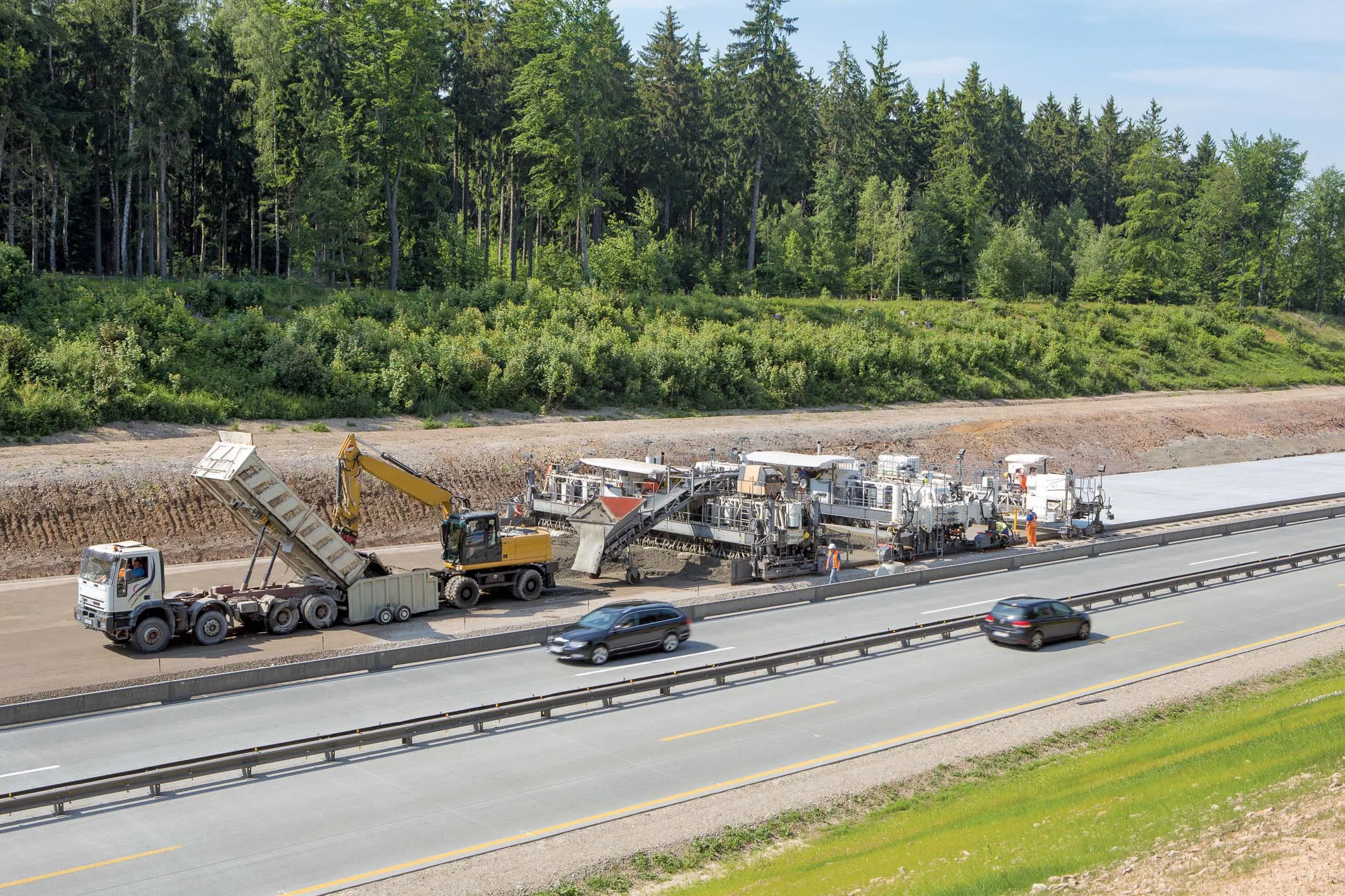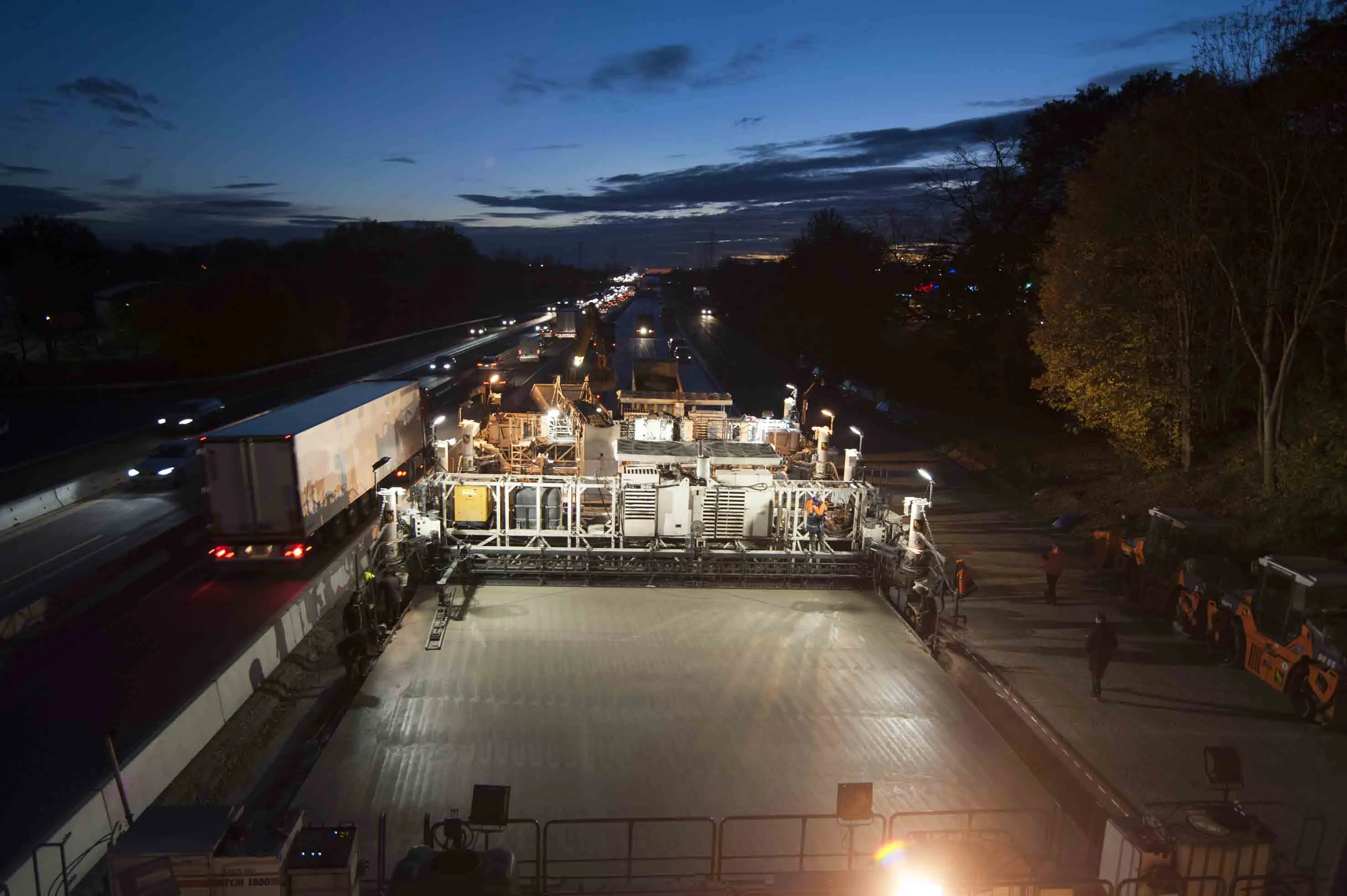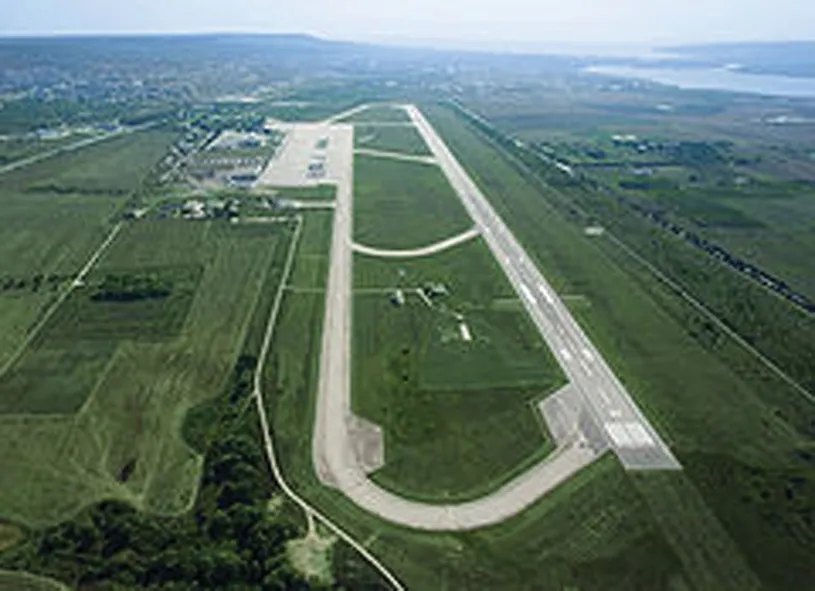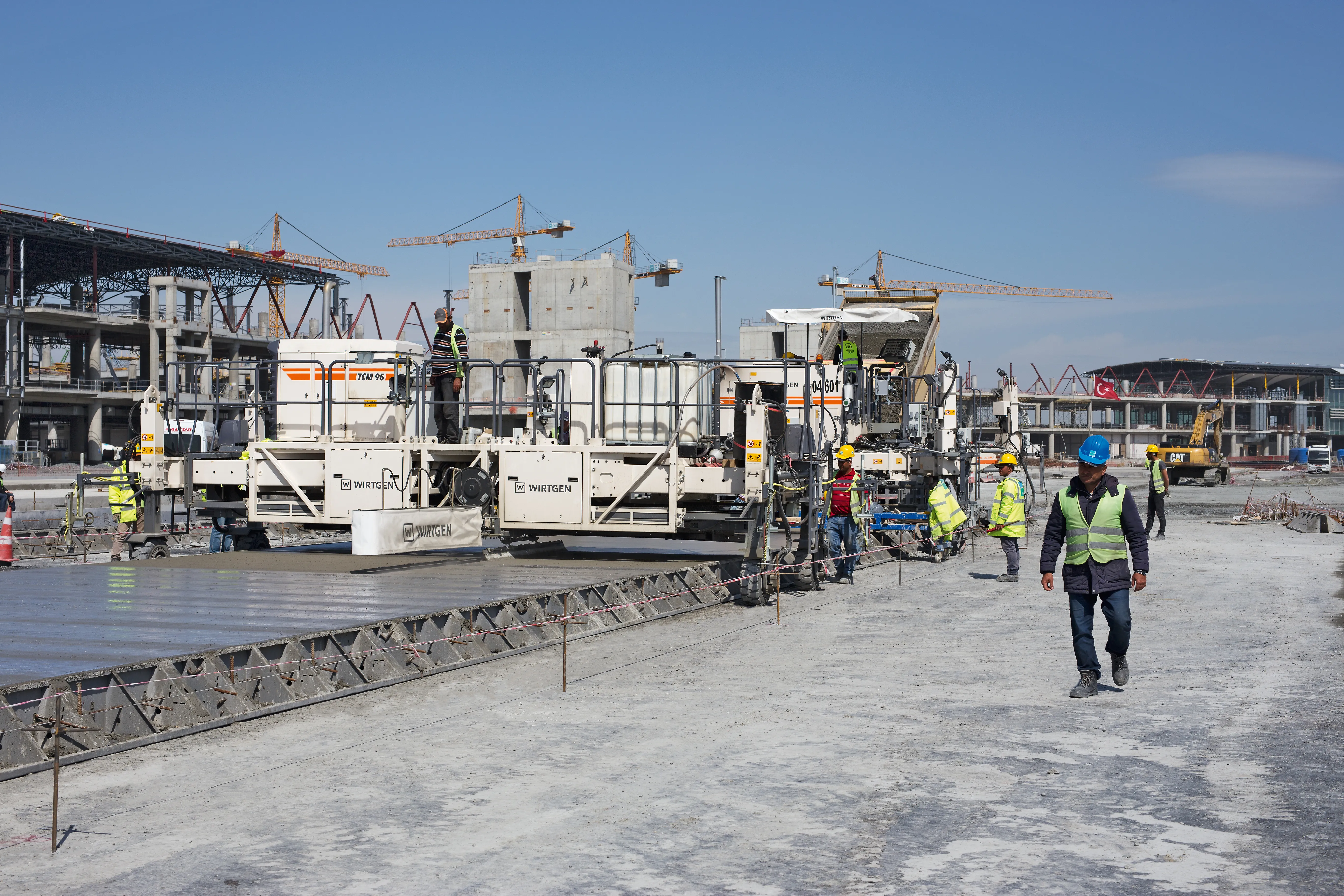
Istanbul’s new airport is Turkey’s biggest infrastructure project ever. It is also expected to become the world's largest airport by estimated passenger numbers. When it opens this year it will have two runways; however, this will be expanded to three runways by 2019 and to six runways at the end of the project in 2028. The airport is being built by IGA, a consortium comprising Turkey’s five leading contractors -
Earthworks posed a challenge as this 9,000ha site was located on former surface coal mine workings. The ground conditions were poor, making it harder to construct a base with a high load-bearing capacity The initial work used innovative compaction methods, with finishing work carried out by 10 Hamm 3516 compactors. First, the non-cohesive soils of gravel and crushed stone were compacted. The machines then compacted soils, which had been placed by trucks and spread by graders.
More than 3,000 trucks are in use, with many of them transporting asphalt mix for runway construction. The asphalt is being produced by six Benninghoven plants, a TBA 3000 and a TBA 4000 as well as two ECO 3000s and two ECO 4000s. In all, the plants are producing up to 1,680tonnes/hour, depending on the type of asphalt to be produced.
The mix for the surface course consists of a stone mastic asphalt with polymer-modified bitumen. This mix material is used for surfaces which are subjected to heavy stresses and uses a high proportion of stone, polymer-modified bitumen and stabilising additives. The composition is designed to ensure resistance to deformation and also to produce surface courses that are robust, safe for traffic and have a long service life.
In total, 12 Vögele pavers are laying down asphalt for the runways and a number of taxiways. In addition to the three new SUPER 2100-3 pavers, other paving teams are working with earlier models: three SUPER 2100-2, and six SUPER 1900-2 pavers. The machines are constructing the first three of the six runways. The pavements have a 290mm base course, a 120mm binder course and a 40mm surface course. The SUPER 1900-2 pavers use AB 600 TV extending screeds. The SUPER 2100-2 and SUPER 2100-3 pavers meanwhile use SB 250 fixed-width screeds.
On the job site, the working width is 12m. In this configuration, the tracked pavers work hot-to-hot, ensuring a strong bond as they pave the 75m-wide runways – either 3.75km or 4.1km long - and a number of taxiways. The total area being paved is 2.2 million m2.
Around 20 Hamm Series HD+ and HD tandem rollers are compacting the asphalt surfaces. Meanwhile, Hamm rubber tyred compactors are used for finishing as the kneading effect of the rubber tyred rollers guarantees good surface sealing.
For the concrete taxiways, the IGA consortium is using three SP 500 models with dowel-bar inserters, as well as one SP 25 slipformer and two TCM 95 texture curing machines. They are paving taxiways with a depth of 400mm and a width of 2-6m.
The SP 500 slipform pavers have been equipped with dowel-bar inserters. These machines insert dowels at intervals of 380-500mm to ensure the correct height of adjacent slabs. The TCM 95 is equipped with an automatic spraying and brooming system. Once the surface has been broomed to the necessary texture, the spraying system is used to help prevent stresses and cracks.


